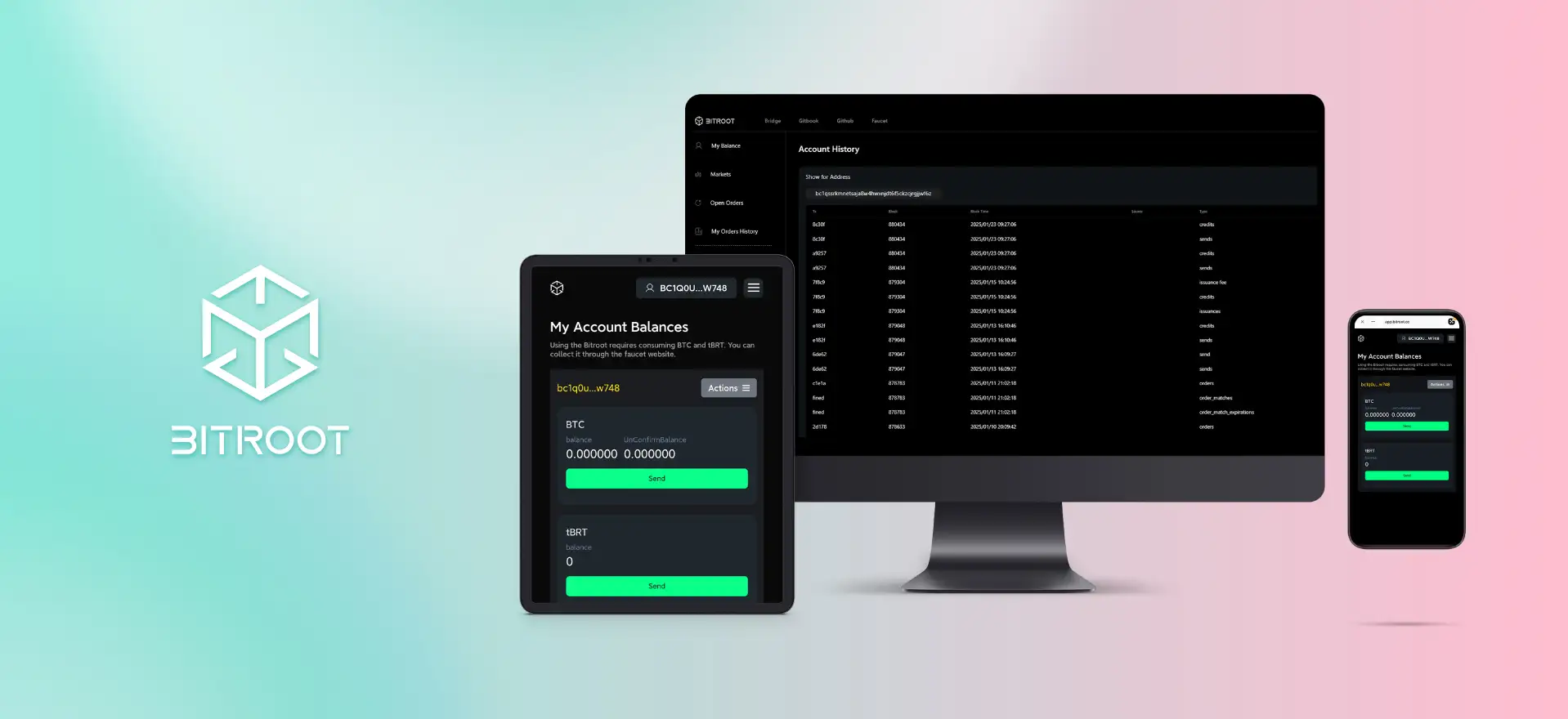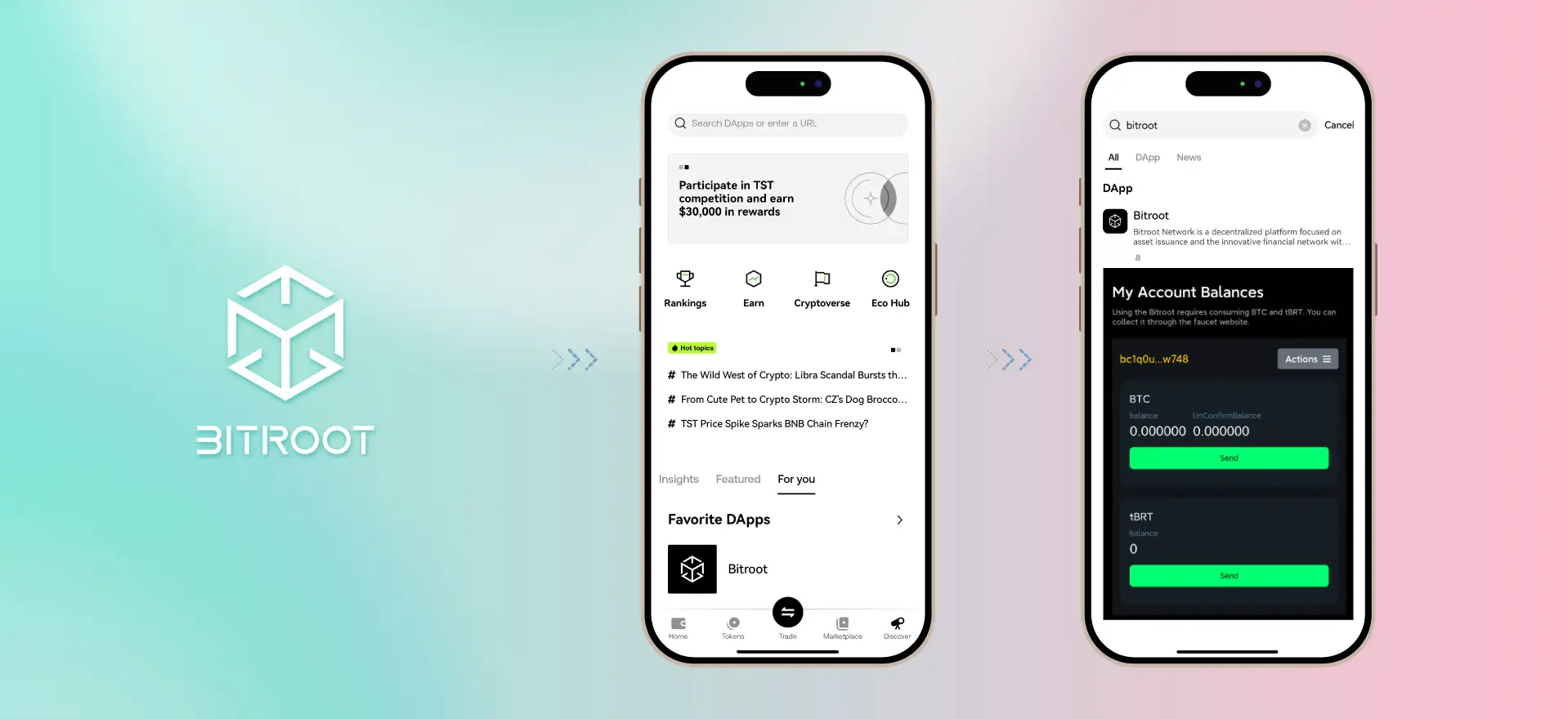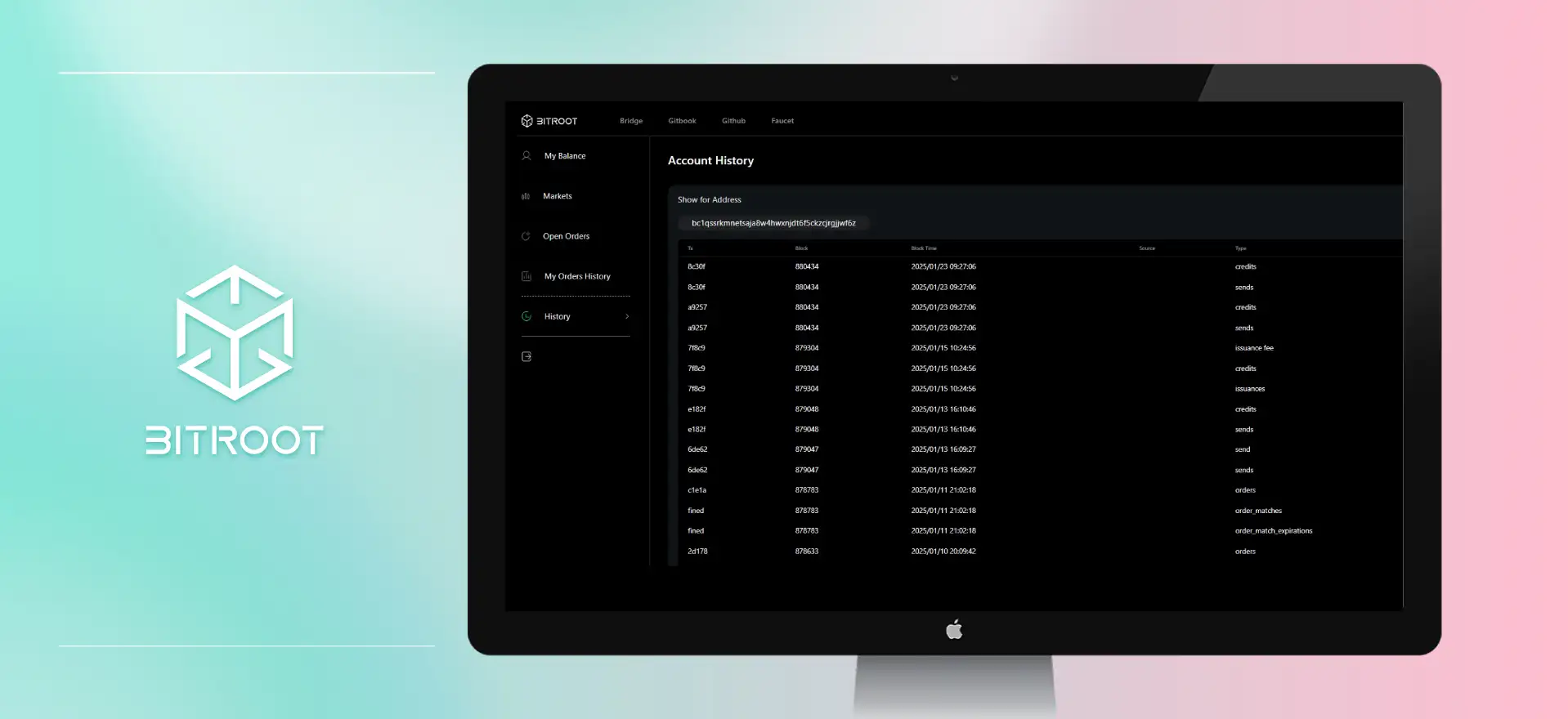About Bitroot
Bitroot is a next-generation programmable asset issuance protocol built on the Bitcoin blockchain. Unlike most Bitcoin-based platforms, Bitroot enables smart contract capabilities and native digital asset management through its virtual machine, turning Bitcoin into a fully programmable financial layer. With the ability to mint, issue, transfer, and manage Bitcoin-native assets, Bitroot pushes the boundaries of what’s possible on the Bitcoin network.
Backed by a team of seasoned professionals in Web3, finance, and cryptography, Bitroot offers developers and users a frictionless way to interact with programmable Bitcoin assets. Its architecture includes a full virtual machine, asset issuance standards similar to ERC-20, and a built-in decentralized exchange — all while maintaining Bitcoin’s core principles of decentralization and security.
Bitroot is the first protocol to bring a complete programmable asset layer to the Bitcoin ecosystem, extending the network’s capabilities far beyond simple transfers or store-of-value use cases. As the Bitcoin ecosystem faces limitations due to its lack of native smart contract support, Bitroot introduces a dedicated virtual machine — the Bitroot VM — that enables native asset issuance, management, and smart contract deployment directly on the Bitcoin chain.
This protocol is designed to transform Bitcoin from a static ledger into a distributed computing platform. Through features like native smart contracts, asset programmability, and compatibility with other Bitcoin-native protocols, Bitroot enables the creation of DApps, DeFi tools, and new token economies directly on the Bitcoin network. By using the OP_CAT opcode reintroduced via Taproot scripting upgrades, Bitroot opens the door to more expressive and scalable applications on Bitcoin.
Market timing is crucial. Following the most recent Bitcoin halving, miner rewards have decreased — increasing the demand for alternative revenue streams like asset fees and DeFi participation. Bitroot is positioned to capitalize on this shift by providing infrastructure for asset creation, tokenization, and liquidity mechanisms. The projected growth of the Bitcoin-native asset sector (potentially exceeding $500 billion in the next five years) makes Bitroot a cornerstone protocol for ecosystem expansion.
Bitroot is also designed to simplify onboarding. Asset creation does not require deep coding knowledge — users can create and manage assets using a guided interface. With features like Alphabetic Names, Subassets, and Numeric Tokens, Bitroot supports a wide range of use cases including DAOs, NFTs, community tokens, and more.
Competitors in this space include Stacks, which brings smart contracts to Bitcoin using Clarity, and RSK, a Bitcoin sidechain. However, Bitroot stands out with its direct integration into Bitcoin’s base layer and its use of Bitcoin-native scripting, making it more decentralized and closely aligned with Bitcoin’s core principles.
Bitroot offers a powerful set of features that bring flexibility and programmability to Bitcoin:
- Bitroot VM: A virtual machine built on Bitcoin that enables native asset minting, smart contract deployment, and asset transfers.
- Smart Contract Integration: Uses OP_CAT (BIP-420) to bring Turing-complete logic to the Bitcoin scripting environment.
- Easy Asset Issuance: Users can create Alphabetic, Subasset, and Numeric tokens without writing code.
- Decentralized Exchange: Trade Bitroot-based tokens directly on the built-in Bitcoin-native DEX with an order book model.
- Layer 2 Support: Bitroot Layer2 can be added via Web3 wallets using the Bitroot network RPC to interact with additional tools and scalability layers.
- Security by Bitcoin: All assets and transactions are protected by Bitcoin’s consensus, ensuring maximum decentralization and censorship resistance.
Getting started with Bitroot is simple for both developers and users. Here’s how you can begin:
- Visit bitroot.co and open the app.
- Create a new Bitroot wallet and securely store your mnemonic phrase.
- Choose the type of asset you want to create: Alphabetic, Subasset, or Numeric.
- Fill in the token details including name, supply, and optional description.
- Launch your asset and manage it directly from your wallet.
- Use the built-in DEX to trade your assets with other Bitroot tokens.
Bitroot Reviews by Real Users
Bitroot FAQ
Bitroot uses a custom-built virtual machine (Bitroot VM) that enables smart contracts by leveraging Bitcoin’s scripting capabilities, including the recently reintroduced OP_CAT opcode. This allows developers to create complex transaction conditions and asset logic without altering Bitcoin's base security model. Learn more at Bitroot.
You can issue Alphabetic assets (named), Subassets (children of existing tokens), or Numeric assets (randomized codes). Each type serves a different use case — from branding tokens to technical integrations. The process is simple and doesn’t require smart contract coding. Visit Bitroot to start.
OP_CAT is a Bitcoin opcode that enables the concatenation of data in scripts. It was reactivated in Bitcoin’s testnet and is essential to Bitroot’s smart contract capabilities. It allows Bitroot VM to build programmable logic directly into Bitcoin transactions, unlocking DeFi and DApp potential on the Bitcoin chain.
Yes, Bitroot includes a decentralized exchange (DEX) built on the Bitcoin network. Users can create trading pairs, place orders, and view order books in a familiar interface — all without leaving the Bitroot environment. The DEX is available inside the wallet UI at bitroot.co.
No coding is needed. Bitroot's interface lets you create and manage tokens through a visual form. You just enter the name, supply, and optional description. Advanced functions like locking token issuance or transferring ownership are also available through the wallet — no scripting required.
You Might Also Like












